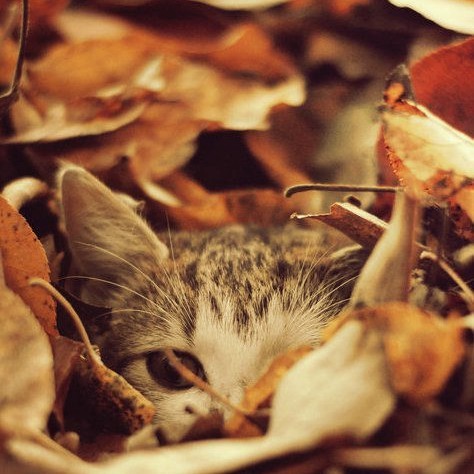🐈⬛🐈🍂🍁🎃☕🌌
🐈⬛🐈🍂🍁🎃☕🌌

More Posts from Monstrous-mind and Others
🍂🍁🎃🍁🍂

🍂🍁🎃🐈🐾🎃🍁🍂






🐈🐅

🍂🍁🎃📚📓


Astronomy From 45,000 Feet
What is the Stratospheric Observatory for Infrared Astronomy, or SOFIA, up to?

SOFIA, the Stratospheric Observatory for Infrared Astronomy, as our flying telescope is called, is a Boeing 747SP aircraft that carries a 2.5-meter telescope to altitudes as high as 45,000 feet. Researchers use SOFIA to study the solar system and beyond using infrared light. This type of light does not reach the ground, but does reach the altitudes where SOFIA flies.

Recently, we used SOFIA to study water on Venus, hoping to learn more about how that planet lost its oceans. Our researchers used a powerful instrument on SOFIA, called a spectrograph, to detect water in its normal form and “heavy water,” which has an extra neutron. The heavy water takes longer to evaporate and builds up over time. By measuring how much heavy water is on Venus’ surface now, our team will be able to estimate how much water Venus had when the planet formed.

We are also using SOFIA to create a detailed map of the Whirlpool Galaxy by making multiple observations of the galaxy. This map will help us understand how stars form from clouds in that galaxy. In particular, it will help us to know if the spiral arms in the galaxy trigger clouds to collapse into stars, or if the arms just show up where stars have already formed.

We can also use SOFIA to study methane on Mars. The Curiosity rover has detected methane on the surface of Mars. But the total amount of methane on Mars is unknown and evidence so far indicates that its levels change significantly over time and location. We are using SOFIA to search for evidence of this gas by mapping the Red Planet with an instrument specially tuned to sniff out methane.

The plumes, illustrated in the artist’s concept above, were previously seen in images as extensions from the edge of the moon. Next our team will use SOFIA to study Jupiter’s icy moon Europa, searching for evidence of possible water plumes detected by the Hubble Space Telescope. The plumes were previously seen in images as extensions from the edge of the moon. Using SOFIA, we will search for water and determine if the plumes are eruptions of water from the surface. If the plumes are coming from the surface, they may be erupting through cracks in the ice that covers Europa’s oceans. Members of our SOFIA team recently discussed studying Europa on the NASA in Silicon Valley Podcast.

This is the view of Jupiter and its moons taken with SOFIA’s visible light guide camera that is used to position the telescope.
🍂🍁🍃








竹の寺 地蔵院 🍁紅葉2021🍁
Jizo-in temple
10 Things: Calling All Pluto Lovers
June 22 marks the 40th anniversary of Charon’s discovery—the dwarf planet Pluto’s largest and first known moon. While the definition of a planet is the subject of vigorous scientific debate, this dwarf planet is a fascinating world to explore. Get to know Pluto’s beautiful, fascinating companion this week.
1. A Happy Accident

Astronomers James Christy and Robert Harrington weren’t even looking for satellites of Pluto when they discovered Charon in June 1978 at the U.S. Naval Observatory Flagstaff Station in Arizona – only about six miles from where Pluto was discovered at Lowell Observatory. Instead, they were trying to refine Pluto’s orbit around the Sun when sharp-eyed Christy noticed images of Pluto were strangely elongated; a blob seemed to move around Pluto.
The direction of elongation cycled back and forth over 6.39 days―the same as Pluto’s rotation period. Searching through their archives of Pluto images taken years before, Christy then found more cases where Pluto appeared elongated. Additional images confirmed he had discovered the first known moon of Pluto.
2. Forever and Always

Christy proposed the name Charon after the mythological ferryman who carried souls across the river Acheron, one of the five mythical rivers that surrounded Pluto’s underworld. But Christy also chose it for a more personal reason: The first four letters matched the name of his wife, Charlene. (Cue the collective sigh.)
3. Big Little Moon

Charon—the largest of Pluto’s five moons and approximately the size of Texas—is almost half the size of Pluto itself. The little moon is so big that Pluto and Charon are sometimes referred to as a double dwarf planet system. The distance between them is 12,200 miles (19,640 kilometers).
4. A Colorful and Violent History

Many scientists on the New Horizons mission expected Charon to be a monotonous, crater-battered world; instead, they found a landscape covered with mountains, canyons, landslides, surface-color variations and more. High-resolution images of the Pluto-facing hemisphere of Charon, taken by New Horizons as the spacecraft sped through the Pluto system on July 14 and transmitted to Earth on Sept. 21, reveal details of a belt of fractures and canyons just north of the moon’s equator.
5. Grander Canyon

This great canyon system stretches more than 1,000 miles (1,600 kilometers) across the entire face of Charon and likely around onto Charon’s far side. Four times as long as the Grand Canyon, and twice as deep in places, these faults and canyons indicate a titanic geological upheaval in Charon’s past.
6. Officially Official

In April 2018, the International Astronomical Union—the internationally recognized authority for naming celestial bodies and their surface features—approved a dozen names for Charon’s features proposed by our New Horizons mission team. Many of the names focus on the literature and mythology of exploration.
7. Flying Over Charon
This flyover video of Charon was created thanks to images from our New Horizons spacecraft. The “flight” starts with the informally named Mordor (dark) region near Charon’s north pole. Then the camera moves south to a vast chasm, descending to just 40 miles (60 kilometers) above the surface to fly through the canyon system.
8. Strikingly Different Worlds

This composite of enhanced color images of Pluto (lower right) and Charon (upper left), was taken by New Horizons as it passed through the Pluto system on July 14, 2015. This image highlights the striking differences between Pluto and Charon. The color and brightness of both Pluto and Charon have been processed identically to allow direct comparison of their surface properties, and to highlight the similarity between Charon’s polar red terrain and Pluto’s equatorial red terrain.
9. Quality Facetime

Charon neither rises nor sets, but hovers over the same spot on Pluto’s surface, and the same side of Charon always faces Pluto―a phenomenon called mutual tidal locking.
10. Shine On, Charon

Bathed in “Plutoshine,” this image from New Horizons shows the night side of Charon against a star field lit by faint, reflected light from Pluto itself on July 15, 2015.
Read the full version of this week’s ‘10 Things to Know’ article on the web HERE.
Make sure to follow us on Tumblr for your regular dose of space: http://nasa.tumblr.com.

🍃🍁🍂🎃🍂🍁🐈🌄🎃💀




Roger Williams Park, Providence, RI. Photos by Frank C. Grace
-
 moonoveroctober reblogged this · 3 weeks ago
moonoveroctober reblogged this · 3 weeks ago -
 chaoticcherryblossombear liked this · 6 months ago
chaoticcherryblossombear liked this · 6 months ago -
 phlegmpop reblogged this · 7 months ago
phlegmpop reblogged this · 7 months ago -
 octobermourning31 liked this · 10 months ago
octobermourning31 liked this · 10 months ago -
 covenawhite66 liked this · 11 months ago
covenawhite66 liked this · 11 months ago -
 autumnblanketofamenity reblogged this · 11 months ago
autumnblanketofamenity reblogged this · 11 months ago -
 make-do-and-mend reblogged this · 11 months ago
make-do-and-mend reblogged this · 11 months ago -
 paperheartmalarky reblogged this · 1 year ago
paperheartmalarky reblogged this · 1 year ago -
 novemberscorp-blog reblogged this · 1 year ago
novemberscorp-blog reblogged this · 1 year ago -
 novemberscorp-blog liked this · 1 year ago
novemberscorp-blog liked this · 1 year ago -
 autumnaugustine liked this · 1 year ago
autumnaugustine liked this · 1 year ago -
 witchofthedirt reblogged this · 1 year ago
witchofthedirt reblogged this · 1 year ago -
 lynniard reblogged this · 1 year ago
lynniard reblogged this · 1 year ago -
 wistfuloctober reblogged this · 1 year ago
wistfuloctober reblogged this · 1 year ago -
 deamonsworld liked this · 1 year ago
deamonsworld liked this · 1 year ago -
 legendaryladytimemachine reblogged this · 1 year ago
legendaryladytimemachine reblogged this · 1 year ago -
 legendaryladytimemachine liked this · 1 year ago
legendaryladytimemachine liked this · 1 year ago -
 we-will-swallow-your-soul liked this · 1 year ago
we-will-swallow-your-soul liked this · 1 year ago -
 edgeoftheatlas reblogged this · 1 year ago
edgeoftheatlas reblogged this · 1 year ago -
 daintynicolette liked this · 1 year ago
daintynicolette liked this · 1 year ago -
 iambadwolfgirl reblogged this · 1 year ago
iambadwolfgirl reblogged this · 1 year ago -
 lestat0725 reblogged this · 1 year ago
lestat0725 reblogged this · 1 year ago -
 lestat0725 liked this · 1 year ago
lestat0725 liked this · 1 year ago -
 clearfuncupcake liked this · 1 year ago
clearfuncupcake liked this · 1 year ago -
 jinxed-wings liked this · 1 year ago
jinxed-wings liked this · 1 year ago -
 aliceabsinthe liked this · 1 year ago
aliceabsinthe liked this · 1 year ago -
 jessicamaynard reblogged this · 1 year ago
jessicamaynard reblogged this · 1 year ago -
 jessicamaynard liked this · 1 year ago
jessicamaynard liked this · 1 year ago -
 theyearofthewolf liked this · 1 year ago
theyearofthewolf liked this · 1 year ago -
 clarecmu liked this · 1 year ago
clarecmu liked this · 1 year ago -
 eclectic-halloween-witch reblogged this · 1 year ago
eclectic-halloween-witch reblogged this · 1 year ago -
 eclectic-halloween-witch liked this · 1 year ago
eclectic-halloween-witch liked this · 1 year ago -
 autumnblanketofamenity reblogged this · 1 year ago
autumnblanketofamenity reblogged this · 1 year ago -
 ill-make-better-mistakes-tmrw liked this · 1 year ago
ill-make-better-mistakes-tmrw liked this · 1 year ago -
 spookyblog626 liked this · 1 year ago
spookyblog626 liked this · 1 year ago -
 hallowsouls reblogged this · 1 year ago
hallowsouls reblogged this · 1 year ago -
 aliceabsinthe reblogged this · 1 year ago
aliceabsinthe reblogged this · 1 year ago -
 spaceman70 liked this · 1 year ago
spaceman70 liked this · 1 year ago -
 bboyam liked this · 1 year ago
bboyam liked this · 1 year ago -
 adutaomoma liked this · 1 year ago
adutaomoma liked this · 1 year ago -
 celticthunder1994 liked this · 1 year ago
celticthunder1994 liked this · 1 year ago -
 slcr303 liked this · 1 year ago
slcr303 liked this · 1 year ago
My ambition is handicapped by laziness. -C. Bukowski Me gustan las personas desesperadas con mentes rotas y destinos rotos. Están llenos de sorpresas y explosiones. -C. Bukowski. I love cats. Born in the early 80's, raised in the 90's. I like Nature, Autumn, books, landscapes, cold days, cloudy Windy days, space, Science, Paleontology, Biology, Astronomy, History, Social Sciences, Drawing, spending the night watching at the stars, Rick & Morty. I'm a lazy ass.
222 posts